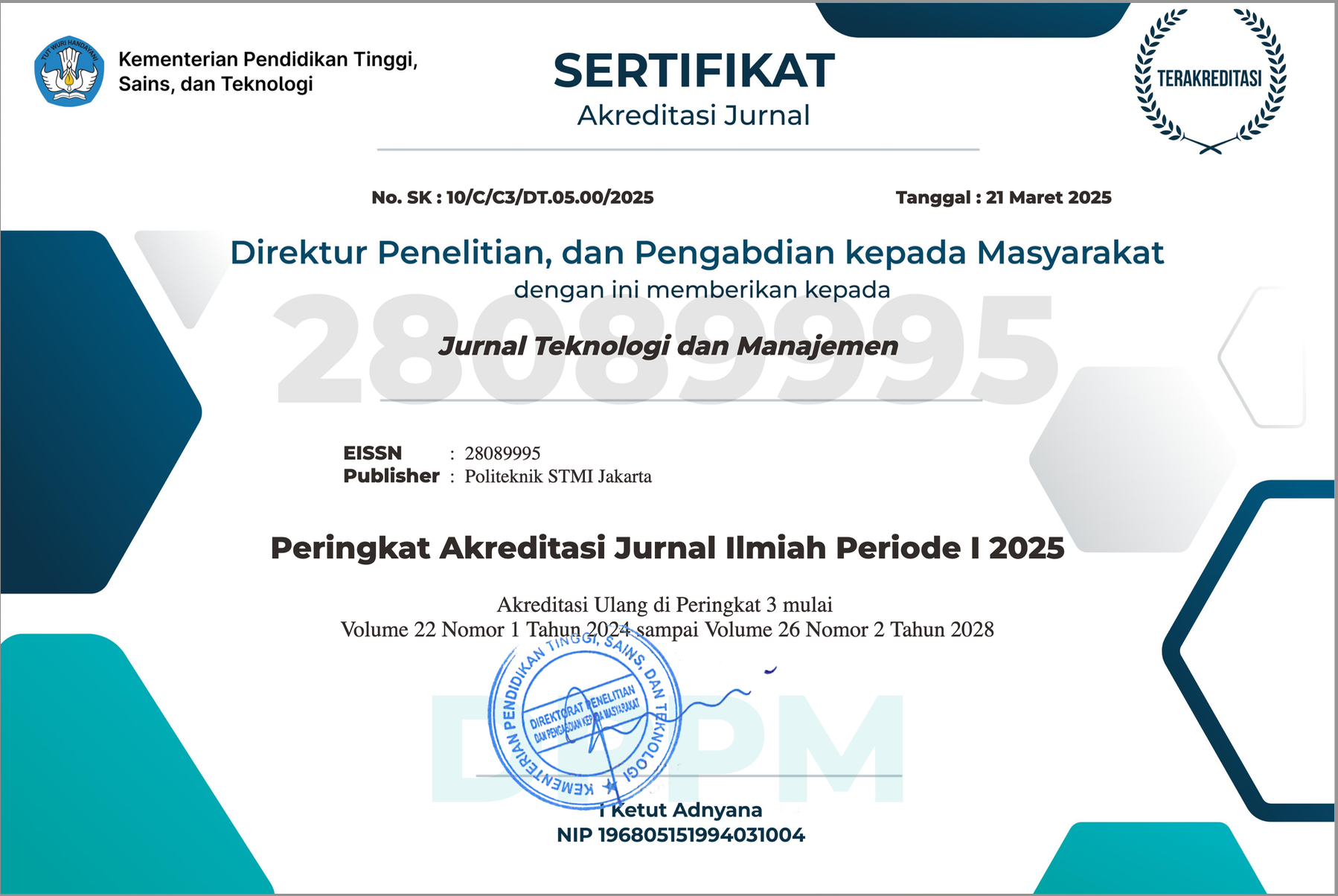FSN Analysis of Spare Parts Based On Turnover Ratio In PT XYZ Maintenance Warehouse
DOI:
https://doi.org/10.52330/jtm.v23i1.402Keywords:
FSN (Fast-Slow Non-Moving), Warehouse, Spare Parts, Turnover RatioAbstract
The primary function of the warehouse is to store raw materials, semi-finished goods, finished products, and spare parts. The Maintenance Division of PT XYZ does not have a policy on theplacement of spare parts. There are two warehouses for storing spare parts. The distance of the second warehouse is 470 meters from the first warehouse. Although the second warehouse isfarther away, operators frequently use it to store spare parts. It causes the flow of spare parts to be less than optimal, especially if the spare parts are needed suddenly. This study aims to design a policy for grouping spare parts in two warehouses using the FSN (Fast-Slow Non-Moving) method based on the turnover ratio. FSN analysis is a classification method based on the frequency of use. The calculation results show that the maintenance division can group spare parts into three groups to minimize the distance for taking spare parts. The FSN analysis states that 83.9% of the 1045 electric spare parts and 79.5% of the 39 FC production spare parts are in the non-moving category. Meanwhile, as many as 51.8% of the 2670 mechanical spare parts are in the slow-movingcategory. Managerial decisions dictate that electrical and FC production parts are placed in the second warehouse, while mechanical parts are in the first warehouse. By implementing FSN, companies can achieve operational efficiency and can increase the reliability of the overall maintenance system.Downloads
Published
2025-04-08
How to Cite
Herlina, L., Basri, A. F. ., & Ekawati, R. (2025). FSN Analysis of Spare Parts Based On Turnover Ratio In PT XYZ Maintenance Warehouse. Jurnal Teknologi Dan Manajemen, 23(1), 11-17. https://doi.org/10.52330/jtm.v23i1.402
Issue
Section
Articles
License
Copyright (c) 2025 Jurnal Teknologi dan Manajemen

This work is licensed under a Creative Commons Attribution-NonCommercial 4.0 International License.


















